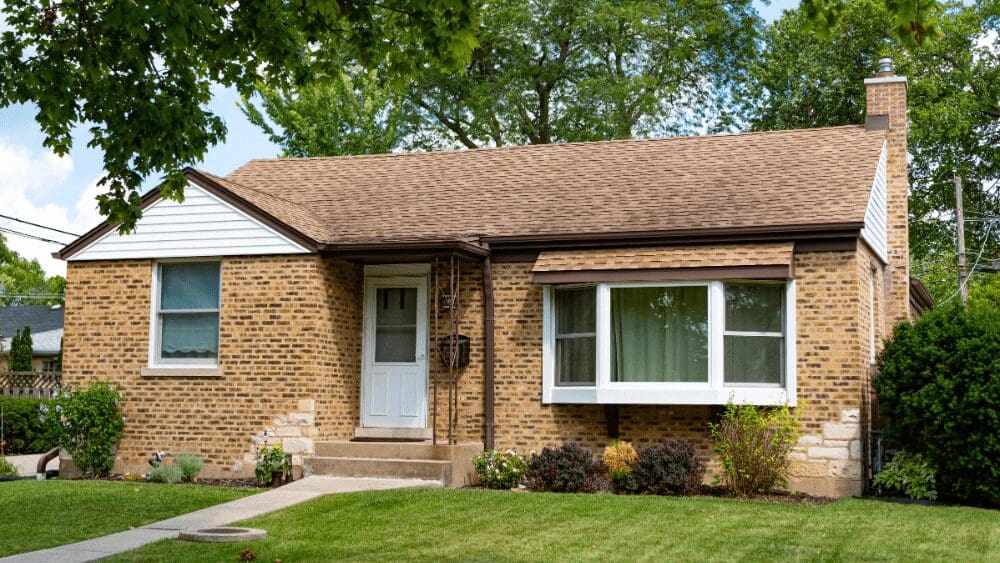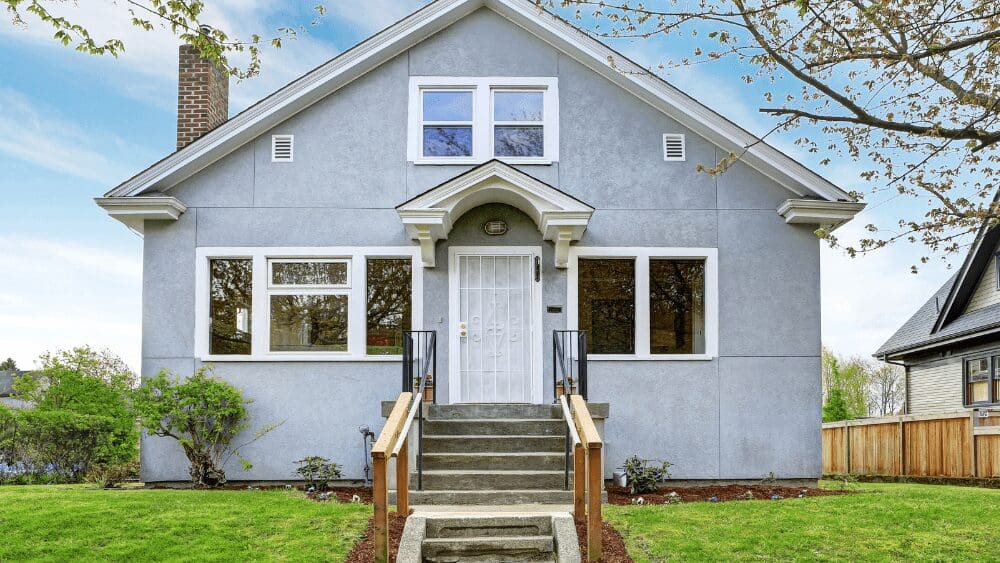
Looking to sell a house in California? Fear of the unknown can cause sellers high-level anxiety, especially in a shifting housing market. Selling a house in California can be difficult. This is why knowing what to expect can help you make a comprehensive plan and push forward with confidence toward selling your home in California. This article will walk you through how to price your home, disclosures, and other documents. We’ll also review prep and other critical considerations for selling your home in The Golden State. For additional expertise, top real estate agent Michael Sandoval, who works with 69% more single-family homes than the average agent in Sacramento, California, shares insights. If you’re selling on the open market, pricing your home right is one of the most critical steps. The difference maker is an agent with expertise and relevant knowledge about your market. If you price it too high, you’ll limit your buyer pool, which means your home has less exposure. And less chance of selling. A seller must understand that “We are in transition in the current shifting market. We have officially shifted, and we see significant price reductions,” Sandoval says. 49% of the homes in Sandoval’s Sacramento market have slashed their asking price. The National Association of Realtors internal data reveals a 1% of the sales price investment into home staging saw an average return on investment of 5% to 15% over the asking price. A HomeLight survey of more than 900 real estate agents found that painting’s potential return on investment was more than 50%. If you want to price your California house to sell for the most money, it might be a good idea to stage your home and paint both the exterior and interior of your house. Stage the home: Making an impression on the buyer is vital to a successful sale. “Make it presentable and worthy enough. When a buyer walks in, they don’t want to think about doing a lot of upkeep or maintenance,” Sandoval says. You can stage your home yourself, but another option is to pay to have your home staged. Staging includes things like: The goal of staging is to make the appearance livable and let the buyer use their imagination. A properly staged home may result in: You’ll want them to imagine their family in the living space. It’s up to you to provide the blank canvas by staging your home. “We want to have the buyers walk through and envision themselves there,” Sandoval says. Paint the home: Painting your house is an inexpensive improvement that you can make to your house. “It’s not that difficult to do that [paint]. It adds flair to a home,” Sandoval says. Also, a nice neutral color helps buyers imagine their decorations and preferences on your clean walls. Real estate comparable listings (real estate comps) compare the prices on homes similar to yours. It’s also a critical step in selling your home. If you mess up the listing price, you might struggle to sell your California home. “The number one thing to help sell your home faster is pricing,” Sandoval says. An experienced real estate agent can help you price your home through a comparative market analysis or CMA. This is a report that agents use to calculate the value of a home by evaluating: Making sure the listing price is in that Goldilocks zone may be the difference between selling your home or languishing with no offers. To accurately set the listing, an agent will have extensive data about: The data and expertise will help you determine an accurate listing price that helps with selling a home in California. Curious about what your home might be worth right now? HomeLight’s online Home Value Estimator tool can give you a preliminary estimate of your home’s worth. It depends. “Usually, your first offer is going to be one of your better or best offers,” Sandoval says. If the offer is: It might be in your best interest to accept that first offer. It might be the case that you have competing buyers, or you want to see the market for your home. In that case, you don’t have to take the first offer. You have the option to: How much you will make selling your California home depends on a whole host of variables. To determine how much you will make, first, you need to know: These estimated figures can be a helpful planning tool as you prepare to sell your home in California. The closing costs for a median price home in California ($839,460) — when a typical mortgage payoff is involved — may be more than 50% of the home’s sale price, or more than $400,000. Check out how California’s closing costs compared to national averages. Then take a look at HomeLight’s Net Proceeds Calculator. It can help you estimate the cost of selling your home and the net proceeds you might earn from the sale. Buyer beware is no longer the law of the land in California. California’s Civil Code 1102 stipulates that sellers have a legal obligation to disclose any material facts about a property; failure to disclose may result in penalties. Sellers in California are required to complete a Transfer Disclosure Statement. You’ll be prompted to fill out any information that may influence a buyer’s decision to purchase the home. The form specifically asks the seller to disclose the presence of the following: Selling a home in California also requires these additional disclosure forms including: You are responsible for many disclosures when selling a home in California. The California Association of Realtors created a comprehensive sales disclosure chart to assist sellers. There are some disclosure exceptions when selling a home in California. For instance, California sellers are exempt from some disclosures if they: You don’t have to disclose a death in your California home if the death occurred more than three years before the sale of the house. You also don’t have to disclose if a prior occupant had Acquired Immune Deficiency Syndrome. Anyone selling a home in California must have the following documents: You may be required to provide these additional documents when selling a home in California: While it may sound like a lot of paperwork to manage, an experienced California real estate agent can help you navigate through this ocean of home sale documents. There are a number of factors to consider as you prepare to sell your California home. You will want to find the right balance of time and money investments for overall repairs, and fixes that might be needed to be ready for the home appraisal, home inspection, and showings. Major renovation projects do not have a high return on investment. The National Association of Realtors estimates that you will earn back a mere 52% of what you spend. “What it boils down to is the home’s presentation, make it look presentable, and check all the boxes for your buyer,” Sandoval says. That means your target as a seller is to hit the sweet spot for home repairs that will make your house marketable. We’ve gathered a list of home improvements you should do and those you are better off skipping before selling your house in California. Fix it: Skip it: After you accept an offer, the buyer’s lender usually contacts a third-party appraisal management company (AMC). The appraiser’s role is to provide a professional opinion on your home’s value. The appraisal is meant to ensure the home is worth what the buyer asked to borrow for the purchase. To prepare for the home appraisal: Sellers in California shouldn’t balk at a home inspection. “Sellers can address issues with the property proactively,” Sandoval says. Buyers don’t have to accept a seller’s pre-listing inspection, but it may be a helpful planning tool. To prepare for the home inspection: Californians love their pets, but sometimes those pets are stinky. “Smells are huge; I’ve had buyers walk into an immaculate home that stunk like pets, and it deterred them from buying the house,” Sandoval says. To prepare for showings: “I understand some sellers don’t have the money to do everything. In that case, highlight the very best attributes of your house and price your home with the market,” Sandoval says. An experienced agent will know how to help you find a solution to any selling situation, even a home that needs repairs you don’t think you can afford. Top agents often know and work with local contractors, have connections with cash investors, or may have knowledge of bridge programs to help you repair your home and sell it for a higher price, allowing you to repay the funds after the sale. You can also request a no-obligation quote from a platform like HomeLight’s Simple Sale, which will let you compare a no-obligation cash offer with what a top agent in your market might be able to get for your home. We’ll share details about cash offers and other selling options later in this post. Selling a home in California is subject to changing market conditions. Marketing your home is a little bit different than it was a year ago. Tips for marketing a home in California: The best time to sell your California home can vary depending on location. Statewide, the best time to sell your home in California is June. Based on closing data, the best time to list your home would be in March. You could sell your house for 2.38% more than the yearly average. Suppose you want to sell your home fast. The best month is also June, so you need to list it in March. Homes listed in March sold an average of four days faster. Search your home’s location using our Best Time to Sell Calculator, where we crunch days on the market and local home sale price data to determine what times of year homes sell the fastest and for the most money on average. The main options to sell a house in California include: A great real estate agent will provide guidance and expert advice throughout the process of listing and selling your home. An experienced agent can help you set a reasonable selling price, provide preparation and presentation tips, will know the best marketing strategies for your market, and will work to find the best buyers. A top agent can help reduce hassles and headaches and save time and money. “As a real estate professional, I’m held to a higher standard. We’re able to spot red flags and protect our clients. We have a fiduciary duty and an interest in helping sell the property,” Sandoval says. According to the National Association of Realtors (NAR), about 90% of home sellers work with a real estate agent. This option, called “for sale by owner” or “FSBO,” is less common. Only about 7% of sellers take this route, according to NAR. Most FSBO sellers are looking to avoid paying a commission to a seller’s agent, also called a listing agent. The total commission for a home sale normally falls between 5%-6% of the sale price, which the listing agent will split (typically around 50-50) with the buyer’s agent. FBSO sellers still need to pay the buyers’ agent, saving about 3% of their sales price overall. Statistically, properties sold FSBO sell for less than agent-listed homes. According to a recent NAR report, FSBO homes sold for a median price of $260,000 compared to a median price of $318,000 for agent-assisted sales. If you need to sell your home fast or just need a low-stress transaction — perhaps to sell an inherited or a distressed property — another option is to work directly with a property investor or house-buying company rather than list on the open market. Some examples of cash buyers include: iBuyers: Instant buyers, known as iBuyers, are real estate technology companies that buy homes. These companies, such as Opendoor, Offerpad, and RedfinNow, have front-facing websites where customers can request near-instant virtual offers on their homes. iBuyers allow sellers to skip repairs and showings and tend to provide cash offers that are closer to market value than other types of home investors and flippers. iBuyers typically charge a convenience fee that is a percentage of the sales price. Simple Sale: Simple Sale is a HomeLight platform that provides a cash offer to buy your home, which allows you to skip repair costs, showings, and agent commissions. Simply provide a few details about your property, and you’ll receive a no-obligation all-cash offer in as few as 72 hours. If you accept a Simple Sale cash offer, you can close in as little as 10 days. It’s one of California’s fastest, most convenient ways to sell a home. We Buy Houses investor groups: We Buy Houses operations typically buy homes at a discounted rate and generally seek out homes needing significant repairs. These companies can help sellers cash out quickly; many will cover a seller’s closing costs. If you are considering a cash offer from an investor group, vet the company thoroughly. The level of experience, integrity, and customer service you experience can vary. Some are established franchises that strive to maintain consistent standards. Others are small groups or individuals that may not have a proven track record. Check reviews, read testimonials, and research the company’s presence and performance in the market. And, of course, read any buying agreement carefully before signing. HomeLight’s Agent Match platform can connect you to the top-performing agents in your California market. This free tool analyzes over 27 million transactions and thousands of reviews to determine which agent is best for you based on your needs. Our data shows that the top 5% of real estate agents across the U.S. sell homes for as much as 10% more than the average real estate agent. “There’s a lot of mistakes,” Sandoval says, “not using a Realtor is number one.” Other mistakes include: Emerging from COVID, people want to stretch out a little bit more. They want more space and “flexible space” to work from home, home school, or pursue other interests, Sandoval says. Other things that California buyers are looking for include: As the market shifts, sellers offer more concessions. “Sellers are offering closing cost credits. That’s something you wouldn’t have seen eight months ago,” Sandoval says, “you see it all the time on listings, anywhere from 1% to 3% credit.” Every state has rules and regulations that guide the sale of homes. Selling a home in California is no different. Although it might seem like selling your California home is complicated, trust your real estate agent or real estate attorney to help you navigate the required paperwork, disclosures, and anything else that might pop up during the transaction. HomeLight’s Agent Match can connect you with top-performing agents in California who have the local experience and market knowledge to guide you through every step of the home-selling journey successfully. LEARN MORESelling Your California Rental? 6 Tips to Navigate the State’s Tenant-Friendly LawsWhat Is the Average Cost to Sell a House in California?Selling a House ‘As Is’ in CaliforniaCalifornia Recently Sold Homes10 of the Top Real Estate Companies in CaliforniaCalifornia Housing Market OverviewHow should I price my California home?
Pricing to sell for the most money
Pricing to sell quickly and still get the best possible proceeds
Should I accept the first offer on my California house?
How much will I make selling my California home?
Typical closing costs in California
Selling Expense
Example Cost
Mortgage loan payoff
$371,981
Reconveyance fees
$150
Attorney fees
$100 to $400 per hour
Landscaping
National average: $3,375
Painting interior
$2,000
Pre-listing inspection
$279-$400
Realtor fees
Typically no more than 5.8%
Escrow fee
1% to 2% of sale price (negotiable between buyer and seller)
Title fees
0.5% to 1% of the sale price
Repairs
1.5% of the sale price
Homeowner’s association dues
Prorated portion of the annual amount
Capital gains tax (federal)
Depends on exclusions
California Franchise Tax Board, Capital Gains Tax
1% to 13.3% of the final sale price
County transfer tax
Typically $1.10 per $1,000
City transfer tax (where required)
Variable by city
Property tax owed
Variable, ranges from 0.51% to 1.01%
What do I have to disclose when selling a house in California?
Disclosure exceptions
What documents do I need to sell a home in California?
Are there additional documents I need to sell a home in California?
What it boils down to is the home’s presentation, make it look presentable, and check all the boxes for your buyer.
How can I prepare my California home before the sale?
What repairs to make — or not make — before selling
To prepare for the home appraisal
To prepare for the home inspection
To prepare for showings
What if my California home needs repairs I can’t afford?
What are some tips to market my house for sale in California?
When is the best time to sell my house in California?
What are my home-selling options in California?
List with the help of a real estate agent
Sell by owner (FSBO)
Sell directly to a cash buyer
How can I find a top-performing real estate agent in California?
What are the most common mistakes California home sellers make?
More insider tips to sell your home in California
Be prepared for seller concessions
Ready to sell your house in California?



